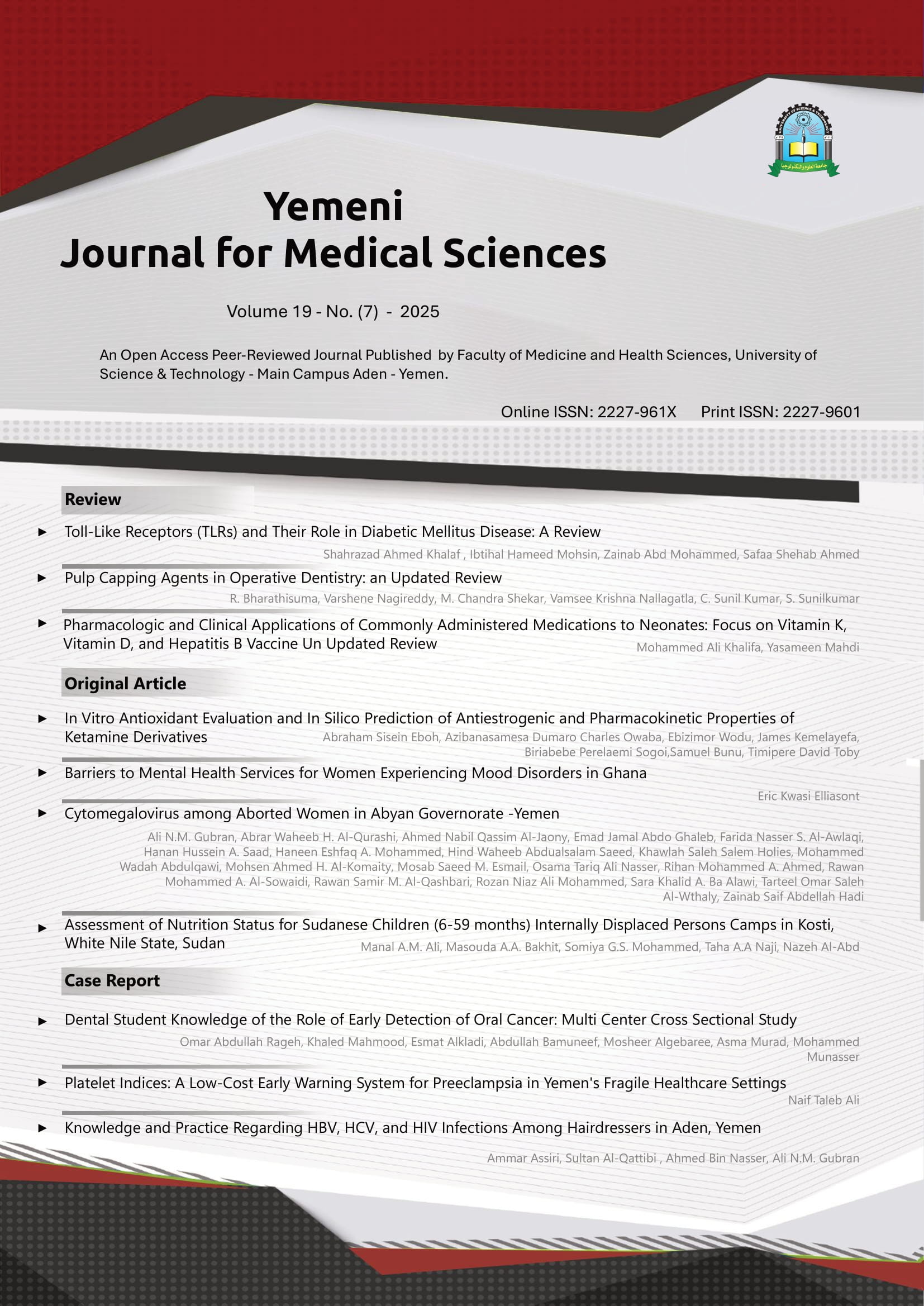Platelet Indices: A Low-Cost Early Warning System for Preeclampsia in Yemen's Fragile Healthcare Settings
##plugins.themes.bootstrap3.article.main##
الملخص
Background: Preeclampsia remains a leading cause of maternal and fetal morbidity and mortality, particularly in low-resource settings like Yemen. Early prediction is crucial for timely intervention.
Objective: This study aimed to evaluate changes in platelet parameters among pregnant women in Al-Dhalea Governorate, Yemen, and assess their potential as predictive markers for preeclampsia development.
Method: A case of 35 years old primigravida married-patient who had illegally induced abortion and referred to our hospital with a bowel prolapse through the vagina. Bowel resection with end-to-end anastomosis was performed. Due to the severity of uterine damage, a total hysterectomy was performed.
Results: This study investigated platelet indices in preeclampsia, revealing significant hematological alterations compared to healthy controls. Preeclamptic women exhibited markedly lower platelet counts (238.9 ± 56.2 × 10⁹/L vs. 284.7 ± 75.6 × 10⁹/L, P < 0.001), suggesting platelet consumption. Concurrently, increased mean platelet volume (MPV) (8.72 ± 0.72 fL vs. 7.96 ± 1.01 fL, P < 0.001) and slightly elevated platelet distribution width (PDW) (15.85 ± 0.34 vs. 15.67 ± 0.27, P = 0.003) indicated platelet activation and turnover. Although platelet-large cell ratio (P-LCR) showed a non-significant upward trend (0.21 ± 0.08 vs. 0.10 ± 0.45, P = 0.12), the overall pattern of platelet parameter changes supports their potential role as biomarkers for preeclampsia progression and severity. These findings highlight the importance of monitoring platelet indices in hypertensive disorders of pregnancy.
Conclusion: Thrombocytopenia and increased MPV serve as early, low-cost indicators of PE risk in Yemeni women, demonstrating the potential of platelet indices in resource-limited settings. At just $0.50 per test, this approach could prevent 1 in 3 maternal deaths in Yemen, according to WHO estimates, making it the most cost-effective screening tool for preeclampsia in conflict zones.
##plugins.themes.bootstrap3.article.details##

هذا العمل مرخص بموجب Creative Commons Attribution 4.0 International License.
تلتزم المجلة اليمنية للعلوم الطبية رخصة مؤسسة المشاع الإبداعي من فئة (CC BY)، والتي تتيح إعادة استخدام البحث بأي شكل من الأشكال شريطة الاستشهاد بالمؤلف (المؤلفين) والمجلة. وتعتبر المجلة أن المؤلف (المؤلفون) موافق على هذه السياسة بمجرد تقديم البحث للنشر.

 https://orcid.org/0009-0008-9541-5327
https://orcid.org/0009-0008-9541-5327







